A self-constructed canine bathing station is a structure designed and built by an individual for the purpose of washing dogs at home. This typically involves modifying existing materials or assembling new components to create a contained area suitable for bathing an animal, reducing mess and potentially providing a more comfortable experience for both the dog and the owner. An example could be converting an old laundry sink into a dedicated space for cleaning a pet.
The advantages of crafting such a setup include cost savings compared to purchasing commercially available models and the ability to customize the design to suit specific spatial limitations and dog sizes. Historically, pet owners relied on outdoor hoses or standard bathtubs, both of which presented challenges such as water temperature control, difficulty containing the animal, and potential damage to the household plumbing. The move toward bespoke solutions reflects a desire for increased convenience and improved animal care.
The following sections will detail considerations for design, material selection, construction methods, and necessary safety precautions when undertaking such a project. Further topics will explore plumbing adaptations and strategies for adapting existing spaces for this purpose.
Construction Tips for a Self-Made Canine Ablution Unit
The construction of a self-assembled pet washing enclosure necessitates careful planning and execution to ensure functionality and safety. The following guidelines offer essential considerations for a successful build.
Tip 1: Planning and Measurement: Prior to initiating construction, meticulous measurement of the intended space and the dog’s dimensions is crucial. This will determine the optimal size and configuration of the unit.
Tip 2: Material Selection: Opt for water-resistant and durable materials such as marine-grade plywood, sealed concrete, or stainless steel. These choices minimize water damage and provide longevity.
Tip 3: Drainage Considerations: A properly designed drainage system is paramount. Ensure the unit is connected to a drain with appropriate plumbing fittings to prevent water accumulation and potential overflows.
Tip 4: Non-Slip Surface: The application of a non-slip coating or the inclusion of a rubber mat within the enclosure is essential to prevent slips and injuries during bathing.
Tip 5: Height and Accessibility: Construct the unit at a comfortable height to minimize strain on the back. Consider incorporating a ramp or steps for larger dogs to facilitate easy entry and exit.
Tip 6: Water Supply and Temperature Control: Integrate a reliable hot and cold water supply with appropriate mixing valves to maintain a safe and comfortable water temperature for the animal.
Tip 7: Secure Restraint Options: Include a secure restraint system, such as an adjustable leash attachment, to keep the dog safely positioned during the washing process.
Adhering to these suggestions promotes the creation of a practical and safe environment for canine hygiene, reducing the mess and potential hazards associated with washing pets in conventional spaces.
The final section will summarize the overall process and address potential challenges associated with maintaining the completed unit.
1. Structural Integrity
Structural integrity, in the context of a self-assembled canine washing station, represents the capacity of the unit to withstand applied forces and environmental conditions without deformation or failure. It is a critical determinant of the tub’s longevity, safety, and overall effectiveness. Compromised structural integrity can lead to leaks, instability, and potential hazards for both the animal and the owner.
- Material Selection and Load Capacity
The choice of materials directly impacts the structural integrity. Utilizing materials with inadequate load-bearing capacity, such as thin plastics or untreated wood, can result in deformation or collapse under the weight of the dog and the water. Selecting materials like marine-grade plywood, reinforced concrete, or stainless steel, coupled with appropriate thickness, ensures the unit can safely support the anticipated load. For example, a large breed dog coupled with 50 gallons of water presents a significant weight, demanding a robust foundation and wall construction.
- Joint Construction and Fastening Techniques
The manner in which components are joined is pivotal to maintaining structural integrity. Weak or improperly executed joints represent points of potential failure. Employing robust fastening techniques, such as screws with waterproof adhesive or welding for metal structures, is essential. Consider mortise and tenon joinery or similar interlocking methods for wooden structures to enhance strength. Insufficiently secured joints can lead to separation under stress, jeopardizing the tub’s stability and water containment.
- Water Resistance and Corrosion Prevention
Prolonged exposure to water can degrade materials and compromise structural integrity. Untreated wood, for instance, is susceptible to rot and decay. Similarly, ferrous metals can corrode. Implementing waterproof coatings, sealants, and corrosion-resistant materials, such as stainless steel or epoxy-coated surfaces, mitigates these risks. Regular inspection and maintenance are also necessary to identify and address any signs of water damage before they escalate into structural problems.
- Base Support and Leveling
An unstable base can induce stress and strain on the entire structure, weakening joints and potentially leading to failure. Ensuring a level and solid foundation is paramount. Utilizing adjustable feet or shims to compensate for uneven surfaces distributes the load evenly and prevents localized stress points. A solid concrete slab or a reinforced frame provides a stable base for the unit, contributing to its overall structural integrity.
These factors underscore the interconnectedness of design, material selection, and construction techniques in achieving adequate structural integrity in a self-built canine washing station. Neglecting any of these elements can compromise the unit’s performance and safety, highlighting the importance of careful planning and execution. The selection of components and the methodology used should emphasize durability and stability, ensuring the diy dog wash tub remains a functional and safe asset for pet care.
2. Waterproof Materials
The selection of waterproof materials is fundamentally critical to the success and longevity of any self-constructed canine bathing unit. The sustained exposure to water inherent in the tub’s function necessitates materials impervious to moisture penetration to prevent degradation, structural damage, and unsanitary conditions.
- Prevention of Material Degradation
The primary role of waterproof materials is to prevent water absorption, which leads to rot, swelling, and weakening of the structure. For example, untreated wood will quickly deteriorate in a damp environment, fostering mold and bacterial growth. Marine-grade plywood, coated with waterproof sealant, or solid surface materials like fiberglass and polypropylene, mitigate these risks by preventing moisture from penetrating the material’s core, thereby extending the life of the diy dog wash tub.
- Maintenance of Structural Integrity
Water penetration can compromise the integrity of joints and fasteners. If water seeps into the connection points of the tub, it can cause expansion and contraction cycles, leading to loosening and eventual failure. Using waterproof adhesives, sealants, and corrosion-resistant fasteners in conjunction with waterproof construction materials ensures that the structural elements remain securely bonded and able to withstand the forces exerted during use. Consider a unit constructed with poorly sealed joints experiencing significant water damage in comparison to a properly sealed unit after similar usage periods.
- Hygiene and Sanitation
Porous materials can harbor bacteria and odors, creating an unsanitary environment for the dog and posing potential health risks. Smooth, non-porous, waterproof surfaces are easier to clean and disinfect, preventing the build-up of grime and pathogens. Examples include gel-coated fiberglass or seamless acrylic, which can be readily wiped down and sanitized after each use, maintaining a hygienic bathing environment. This is especially critical in multi-pet households or professional grooming settings.
- Mitigation of Mold and Mildew Growth
Constant exposure to moisture creates an ideal environment for mold and mildew growth, leading to unsightly stains, unpleasant odors, and potential allergic reactions. Waterproof materials inherently resist mold and mildew proliferation by preventing water from reaching the surface where these organisms thrive. For example, tiling with epoxy grout offers superior mold resistance compared to cementitious grout. The strategic use of these materials minimizes the risk of mold and mildew contamination within the confines of the diy dog wash tub.
In summary, the conscientious selection and application of waterproof materials are paramount to the functionality, durability, and safety of a DIY dog wash tub. It’s a direct factor in mitigating long-term maintenance, preventing the spread of pathogens, and ensuring a safe and hygienic environment for both the dog and the owner. Choosing the correct material for the project is essential to make a DIY dog wash tub that lasts.
3. Drainage Efficiency
Drainage efficiency is a non-negotiable attribute of any functional self-constructed canine bathing unit. Its primary function is the swift and complete removal of wastewater, preventing the accumulation of stagnant water, which can lead to various undesirable consequences. Inefficient drainage creates unsanitary conditions, fosters bacterial growth, and elevates the risk of slips and falls. A poorly designed drainage system can manifest as slow water evacuation, leaving behind residue and prolonging the cleanup process. Conversely, a system engineered for optimal drainage swiftly directs wastewater to the plumbing system, minimizing cleanup time and preventing the proliferation of harmful microorganisms. For example, a tub with a properly sloped base and a large-diameter drain minimizes water pooling, whereas a flat-bottomed tub with a small drain experiences significantly slower drainage rates.
The integration of appropriate plumbing fittings, such as p-traps and drain strainers, is crucial for maintaining drainage efficiency and preventing clogs. P-traps trap debris and prevent sewer gases from entering the bathing area, while drain strainers capture hair and other solid particles, preventing them from accumulating in the drainpipe and causing blockages. Neglecting these components results in frequent drain clogs, potentially requiring costly plumbing repairs. Further, the type and placement of the drain outlet significantly influences efficiency. A centrally located drain allows for more uniform water evacuation compared to an offset drain. Real-world applications demonstrate that diy dog wash tub designs incorporating a sloped floor towards a central drain exhibit superior drainage capabilities and reduced maintenance requirements.
In conclusion, the design and implementation of an effective drainage system are fundamental to the overall functionality, hygiene, and safety of a self-made pet washing enclosure. Prioritizing drainage efficiency through proper slope, drain size, plumbing fittings, and material selection ensures a clean, safe, and low-maintenance bathing environment for canine companions. Overlooking drainage considerations can lead to persistent issues, ultimately undermining the purpose and benefits of the diy dog wash tub.
4. Animal Safety
Animal safety is paramount when designing and constructing a self-assembled canine washing station. A poorly conceived design presents a multitude of risks to the animal, ranging from minor discomfort to serious injury. Prioritizing animal well-being necessitates a thorough understanding of potential hazards and the implementation of appropriate preventative measures.
- Slip Resistance
Slippery surfaces constitute a significant risk of falls and injuries. Dogs, especially when wet and soapy, can lose their footing easily. Incorporating a non-slip surface, such as a textured rubber mat or a specialized non-slip coating, within the tub is essential. This provides adequate traction, minimizing the likelihood of slips, strains, and potential bone fractures. Failure to address this hazard exposes the animal to unnecessary risk during the bathing process. The non-slip feature of diy dog wash tub becomes a significant design consideration and safety standard.
- Water Temperature Control
Exposure to excessively hot or cold water can cause discomfort, stress, and even burns or hypothermia. Integrating a thermostatic mixing valve that allows for precise temperature regulation is crucial. This device ensures that the water remains within a safe and comfortable temperature range for the animal, preventing scalding or chilling. Periodic calibration and maintenance of the valve are necessary to guarantee its continued accuracy. A system lacking adequate temperature control jeopardizes the animal’s well-being.
- Secure Restraint
A frightened or agitated dog may attempt to jump out of the tub, potentially resulting in injury. Providing a secure, yet comfortable, restraint system is necessary to prevent escape attempts. An adjustable leash attachment or a padded harness system can be used to keep the dog safely positioned during the washing process without causing undue stress or discomfort. The restraint should be carefully adjusted to prevent choking or entanglement. The use of a restraint helps diy dog wash tub’s user from restraining animal themself, reduces chances of potential harm on both parties.
- Elimination of Sharp Edges and Protrusions
Sharp edges, exposed screws, and other protrusions within the tub can cause cuts, scrapes, and puncture wounds. All surfaces should be carefully inspected and smoothed to eliminate any potential hazards. Edges can be rounded, and fasteners can be countersunk or covered with protective caps. Protrusions should be avoided entirely. A tub with sharp or uneven surfaces presents an unacceptable risk of injury to the animal.
The facets described above highlight the vital role that animal safety plays in the design and construction of a custom canine bathing station. Through careful consideration of slip resistance, water temperature control, secure restraint options, and the elimination of sharp edges, the potential hazards associated with bathing can be minimized, ensuring a safe and comfortable experience for the animal. A commitment to animal safety should guide every stage of the design and construction process of the diy dog wash tub.
5. Ergonomic Design
Ergonomic design, in the context of a self-constructed canine washing unit, focuses on optimizing the interaction between the user (the pet owner) and the environment to reduce physical strain and improve efficiency. The goal is to create a bathing station that minimizes discomfort and potential injuries for the user while facilitating effective and comfortable pet care.
- Optimal Working Height
The height of the tub directly impacts the user’s posture and can lead to back pain if improperly designed. An ergonomically sound unit positions the tub at a height that minimizes bending or stooping, allowing the user to maintain a neutral spine. For example, a tub height that corresponds to the user’s waist level typically reduces strain compared to a unit situated at ground level. The correct height ensures prolonged tasks can be undertaken without undue physical stress.
- Reach and Accessibility
The distance required to reach various areas within the tub affects the ease of maneuvering the dog and accessing cleaning supplies. An ergonomic design minimizes excessive reaching by strategically positioning shelves, holders, and water controls within easy reach. The unit’s dimensions should allow the user to comfortably access all areas of the dog’s body without straining or stretching. Consider the impact of the tub’s depth and width on the user’s reach and adjust accordingly.
- Surface Materials and Grip
The materials used in the tub’s construction influence grip and stability for both the user and the dog. Smooth, slippery surfaces pose a risk of slips and falls. An ergonomic design incorporates non-slip surfaces for the user to stand on and for the dog to stand within the tub. The materials should also be easy to clean and maintain, minimizing the physical effort required for upkeep. The texture of the materials should promote stability and reduce the risk of accidents.
- Control Placement and Operation
The placement and operation of water controls and other accessories impact ease of use. Ergonomic designs position controls within easy reach and ensure they are simple to operate with minimal force. For example, lever-style faucets are often easier to use than knob-style faucets, especially for individuals with limited hand strength. The layout of controls should be intuitive and minimize the need for bending or reaching.
These facets of ergonomic design are crucial considerations in the construction of a DIY dog wash tub. By optimizing working height, reach, surface materials, and control placement, the bathing process can be made more comfortable and efficient for the user, reducing physical strain and promoting a positive experience for both the pet owner and the animal. These principles work in concert to enhance the practicality and usability of the washing station.
6. Ease of Cleaning
The ease with which a self-constructed canine bathing unit can be cleaned is a critical factor determining its long-term utility and hygiene. A design that neglects cleaning considerations invites the accumulation of dirt, grime, and bacteria, leading to unpleasant odors and potential health risks. The selection of materials, surface finishes, and structural design directly influences the efficiency of the cleaning process. Porous surfaces and intricate designs with difficult-to-reach crevices impede cleaning efforts, while smooth, non-porous materials and streamlined designs facilitate rapid and effective sanitation. For instance, a tub constructed with textured concrete will be considerably more challenging to clean than one fabricated from smooth, gel-coated fiberglass. This difference translates directly into the time and effort required for maintenance, influencing the overall user experience and the longevity of the unit.
Strategic design features can significantly enhance cleaning efficiency. A sloped floor directing wastewater and debris towards a central drain minimizes residual buildup. Similarly, incorporating a removable hair trap in the drain prevents clogging and simplifies the removal of accumulated pet hair. The absence of such features necessitates more frequent and laborious cleaning procedures. Further, the type of cleaning agents compatible with the construction materials must be considered. Abrasive cleaners may damage certain surfaces, while gentler options may prove insufficient for removing stubborn grime. Compatibility testing and the selection of appropriate cleaning products are essential to maintaining the integrity and cleanliness of the bathing unit. Practical application shows well maintained easy to clean DIY dog wash tubs last longer and are more safer environment for your canine companion.
In summary, the ease of cleaning is an integral component of a successful “diy dog wash tub” design. It directly impacts hygiene, maintenance requirements, and the overall lifespan of the structure. Prioritizing smooth, non-porous materials, incorporating strategic design features like sloped floors and removable hair traps, and selecting compatible cleaning agents are all essential considerations. Ignoring these factors will inevitably lead to increased cleaning effort, potential hygiene issues, and a diminished user experience. The long-term benefits of prioritizing ease of cleaning far outweigh the initial investment in appropriate materials and design features; ultimately promoting a more hygienic and efficient environment.
Frequently Asked Questions
This section addresses common inquiries regarding the design, construction, and maintenance of do-it-yourself dog washing tubs. The information provided aims to clarify key considerations and offer guidance for successful implementation.
Question 1: What are the primary factors determining the cost-effectiveness of a self-built dog wash tub versus a commercially available model?
The cost-effectiveness hinges on several variables, including material selection, construction skill level, and the degree of customization desired. Utilizing readily available, repurposed materials may significantly reduce costs. However, employing specialized materials or requiring professional assistance for plumbing or construction can negate potential savings. The relative cost should consider the long-term durability and functionality of the completed unit.
Question 2: How does the size of the dog influence the design considerations for a custom washing station?
The dog’s size dictates the dimensions of the tub, particularly the depth, width, and height. Larger breeds require greater interior space for comfortable maneuvering and washing. The entry point, whether a ramp or steps, must also be scaled appropriately to accommodate the dog’s size and mobility. Structural reinforcement is paramount to support the increased weight of larger animals and water volumes.
Question 3: What are the potential safety hazards associated with a homemade dog wash tub, and how can they be mitigated?
Potential hazards include slippery surfaces, sharp edges, unstable structures, and improperly regulated water temperatures. Mitigation strategies involve incorporating non-slip coatings, rounding edges, ensuring structural stability through robust construction, and installing thermostatic mixing valves to prevent scalding. Regular inspection for wear and tear is crucial.
Question 4: What are the recommended materials for constructing a waterproof and durable dog wash tub?
Suitable materials include marine-grade plywood sealed with epoxy resin, stainless steel, fiberglass, and molded plastics. These materials exhibit water resistance and structural integrity. The choice should be guided by budget constraints, desired aesthetic, and the level of construction expertise available.
Question 5: How should the drainage system for a self-built dog wash tub be properly connected to existing plumbing?
The drainage system must adhere to local plumbing codes and regulations. A licensed plumber should be consulted for proper connection to the existing drain lines. Essential components include a p-trap to prevent sewer gases from entering the space and a drain strainer to capture hair and debris. Ensure adequate slope for efficient water flow.
Question 6: What are the essential maintenance procedures for preserving the hygiene and longevity of a DIY dog wash tub?
Regular cleaning with appropriate disinfectants is necessary to prevent bacterial growth and odor accumulation. Inspect the unit for leaks, cracks, and signs of corrosion. Promptly repair any damage to maintain structural integrity and prevent water damage. Periodically clean the drain strainer to prevent clogs and ensure proper drainage.
These answers provide a foundational understanding of key aspects related to constructing a DIY dog wash tub. Thorough research and adherence to safety guidelines are essential for a successful outcome.
This concludes the FAQ section. Subsequent segments will address advanced topics and specialized construction techniques.
Conclusion
The preceding analysis has comprehensively explored the multifaceted considerations inherent in the design, construction, and maintenance of a “diy dog wash tub”. It has underscored the significance of meticulous planning, informed material selection, and adherence to safety protocols. Drainage efficiency, animal safety, ergonomic design, and ease of cleaning have emerged as paramount factors influencing the overall effectiveness and longevity of such a unit.
The successful implementation of a self-constructed canine bathing station demands a commitment to both technical proficiency and the well-being of the animal. While the allure of customization and potential cost savings may prove compelling, thorough research and careful execution remain non-negotiable. A well-executed “diy dog wash tub” represents a valuable asset to responsible pet ownership, while a poorly conceived one poses significant risks and liabilities. Therefore, due diligence and a dedication to quality craftsmanship are essential to ensure a safe, hygienic, and functional outcome.


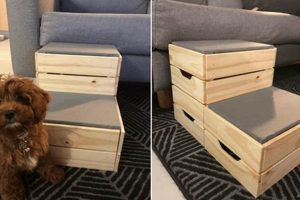
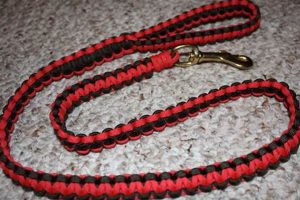
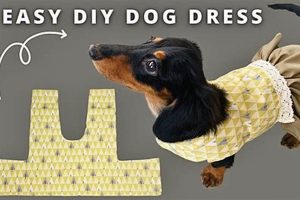
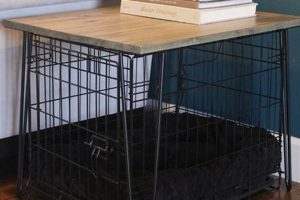
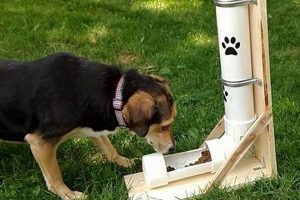
![Build a Safe Sliding Dog Gate DIY [Easy Steps!] The DIY Hub: Creative Crafts, Repairs & Life Hacks Build a Safe Sliding Dog Gate DIY [Easy Steps!] | The DIY Hub: Creative Crafts, Repairs & Life Hacks](https://craftingdiycenter.com/wp-content/uploads/2025/07/th-2861-300x200.jpg)